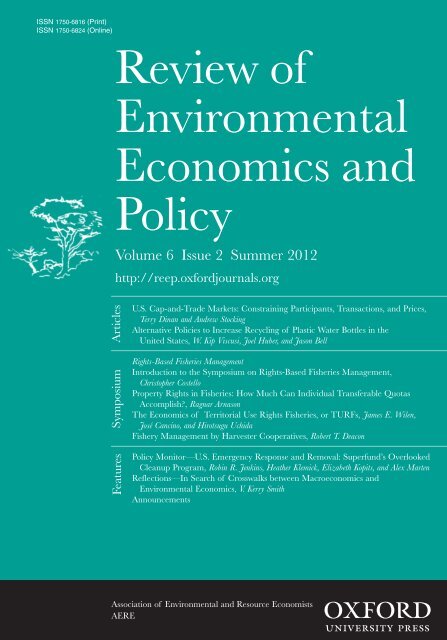Biological Invasions and International Trade: Managing a Moving Target
IF 6.6
3区 经济学
Q1 ECONOMICS
引用次数: 17
Abstract
International trade is a key pathway for the global spread of nonnative species. Historical and emerging trade flows interact with ecological dynamics to shape nonnative species risk and determine how that risk can be mitigated. This article discusses these underlying processes, emerging trade trends, and the role of past and future economics research in understanding and managing nonnative species risks from trade. We identify four priorities for future economics research. These include expanding economic analysis to consider interventions across the biosecurity continuum more comprehensively, leveraging new data systems for real-time prediction and effective allocation of inspection effort, applying economic analysis to anticipate and respond to emerging trade trends, and improving understanding of exporter and consumer behavioral responses to policy interventions in order to encourage intended (and ameliorate unintended) reactions.生物入侵和国际贸易:管理一个移动的目标
国际贸易是外来物种在全球传播的关键途径。历史和新兴的贸易流与生态动态相互作用,形成非本土物种风险,并决定如何减轻这种风险。本文讨论了这些潜在的过程、新兴的贸易趋势,以及过去和未来经济学研究在理解和管理贸易中的非本土物种风险方面的作用。我们确定了未来经济学研究的四个优先事项。其中包括扩大经济分析,以更全面地考虑整个生物安全连续体的干预措施,利用新的数据系统进行实时预测和有效分配检查工作,应用经济分析来预测和应对新出现的贸易趋势,以及提高对出口商和消费者对政策干预的行为反应的理解,以鼓励有意(和改善无意)的反应。
本文章由计算机程序翻译,如有差异,请以英文原文为准。
求助全文
约1分钟内获得全文
求助全文
来源期刊
CiteScore
10.80
自引率
0.00%
发文量
25
期刊介绍:
The Review of Environmental Economics and Policy fills the gap between traditional academic journals and the general interest press by providing a widely accessible yet scholarly source for the latest thinking on environmental economics and related policy. The Review publishes symposia, articles, and regular features that contribute to one or more of the following goals: •to identify and synthesize lessons learned from recent and ongoing environmental economics research; •to provide economic analysis of environmental policy issues; •to promote the sharing of ideas and perspectives among the various sub-fields of environmental economics;

 求助内容:
求助内容: 应助结果提醒方式:
应助结果提醒方式:


